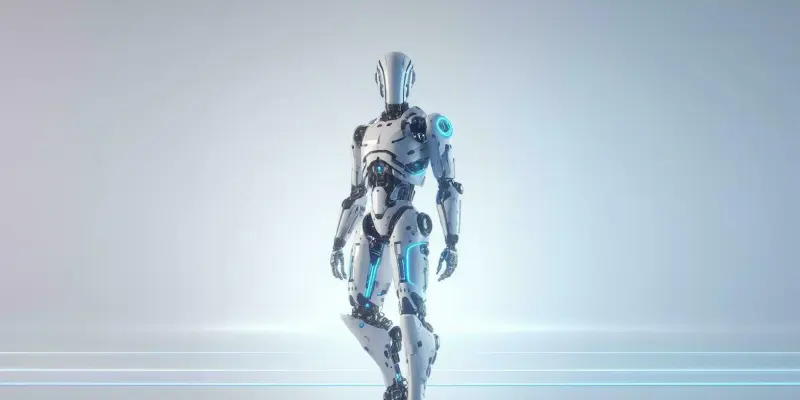In a significant development for the open-source humanoid robotics arena, Hugging Face has recently acquired Pollen Robotics. This strategic move marks a substantial shift in the global landscape of humanoid robots, an industry previously dominated by technological giants like the US and China. Notably, Pollen Robotics is renowned for its Reachy 2 humanoid robot, a model with advanced capabilities such as teleoperation through VR equipment, Python programmability, and proficient robotic arms capable of intricate object management. However, the current version of Reachy 2 lacks walking abilities and has limited lifting capacities, highlighting areas for further innovation and development.
Expanding the Accessibility of Humanoid Robots
The Vision for Open, Affordable, and Hackable Robots
Hugging Face’s vision for the future involves creating humanoid robots that are open, affordable, and easily customizable, taking inspiration from open-source success stories like Linux. This aspiration is particularly critical as the potential for widespread adoption of humanoid robots is immense, promising to revolutionize various workforce sectors and disrupt current economic models. To facilitate the widespread use of humanoid robots, accessibility and the ability to innovate without limitations are crucial. The open-source approach embodied by Reachy 2 could serve as a vital alternative to proprietary systems, which often come with restrictions and concerns around security, such as potential backdoor surveillance from international actors.
NVIDIA’s CEO and the Economic Potential of “Physical AI”
The economic potential of “physical AI” has been touted by prominent industry leaders such as NVIDIA’s CEO Jensen Huang, who estimates a market opportunity that could reach up to $50 trillion. This potential underscores the necessity for open-source humanoid robots like Reachy 2 to provide accessible and modifiable options in a growing field dominated by proprietary models. The synthesis of Pollen Robotics’ expertise and Hugging Face’s broad-reaching software platform, which includes LeRobotHF and the Hugging Face Hub, is expected to accelerate the development of these open-source robots, promoting democratized access to advanced robotic technology and innovation.
Implications for the Industry and Workforce
The Role of the Pollen Robotics Team
Following the acquisition, the entire Pollen Robotics team, including co-founders Matthieu Lapeyre and Pierre Rouanet, will join forces with Hugging Face. Their combined expertise is anticipated to drive the progress of fully open-source humanoid robots. The partnership is set to revolutionize how these robots are developed and utilized. By incorporating the open-source philosophy into the world of robotics, Hugging Face is poised to make significant strides in creating robots that are not only cutting-edge but also accessible to a broader audience. This democratization is expected to lower barriers to entry and foster a culture of innovation and collaboration within the tech community.
Customization and Potential for 3D Printing
One of the most exciting prospects resulting from this acquisition is the potential for users to 3D print their own humanoid robots, leveraging Hugging Face’s comprehensive and widely-used software platform. This capability would enable enthusiasts and developers to create and customize robots to fit their specific needs, as well as contribute to advancements in robotics by experimenting with and improving upon existing designs. By making the hardware and software components of humanoid robots available to tinkerers and professionals alike, Hugging Face aims to cultivate an environment where innovation thrives and new, groundbreaking applications of humanoid robots can emerge.
The Path Forward for Humanoid Robotics
Scaling and Broadening Reach
The acquisition of Pollen Robotics by Hugging Face stands as a pivotal moment in the field of humanoid robotics, with promises of scaling up and broadening the reach of these technologies. As robots become more integral to various sectors, the need for models that are open-source and easily modifiable will become more pronounced. This partnership signifies an essential shift towards making advanced robotic technologies available to a wider audience, ensuring that economic and technological benefits are not limited to a select few corporations or nations. The enhanced accessibility will likely spur innovation across multiple disciplines.
Addressing Security and Ethical Concerns
Moreover, the push for open-source humanoid robots also addresses important security and ethical concerns that have been raised regarding proprietary systems, particularly those developed in countries with different regulatory standards. By empowering users with the ability to inspect, modify, and improve their robot’s hardware and software, Hugging Face and Pollen Robotics are fostering a more transparent and secure approach to robotics development. This increased transparency is crucial as robots become more integrated into daily life, carrying out tasks that require significant trust and reliability from their human counterparts.
Preparing for a Robotic Future
In a notable milestone for the open-source humanoid robotics sector, Hugging Face has recently acquired Pollen Robotics. This strategic acquisition signifies a major shift in the global landscape of humanoid robots, a field predominantly led by technological powerhouses like the US and China. Pollen Robotics is especially recognized for its innovative Reachy 2 humanoid robot, which boasts impressive features such as teleoperation via VR equipment, Python programmability, and highly capable robotic arms adept at complex object manipulation. Despite these advanced attributes, Reachy 2’s current iteration lacks the ability to walk and has restricted lifting capabilities, underscoring key areas ripe for future innovation and enhancement. This acquisition by Hugging Face may lead to significant advancements in these areas, potentially pushing the boundaries of what humanoid robots can achieve. By leveraging Hugging Face’s resources, there is a promising outlook for overcoming present limitations and making strides in the evolution of humanoid robotics.

